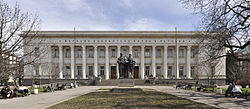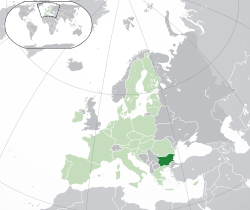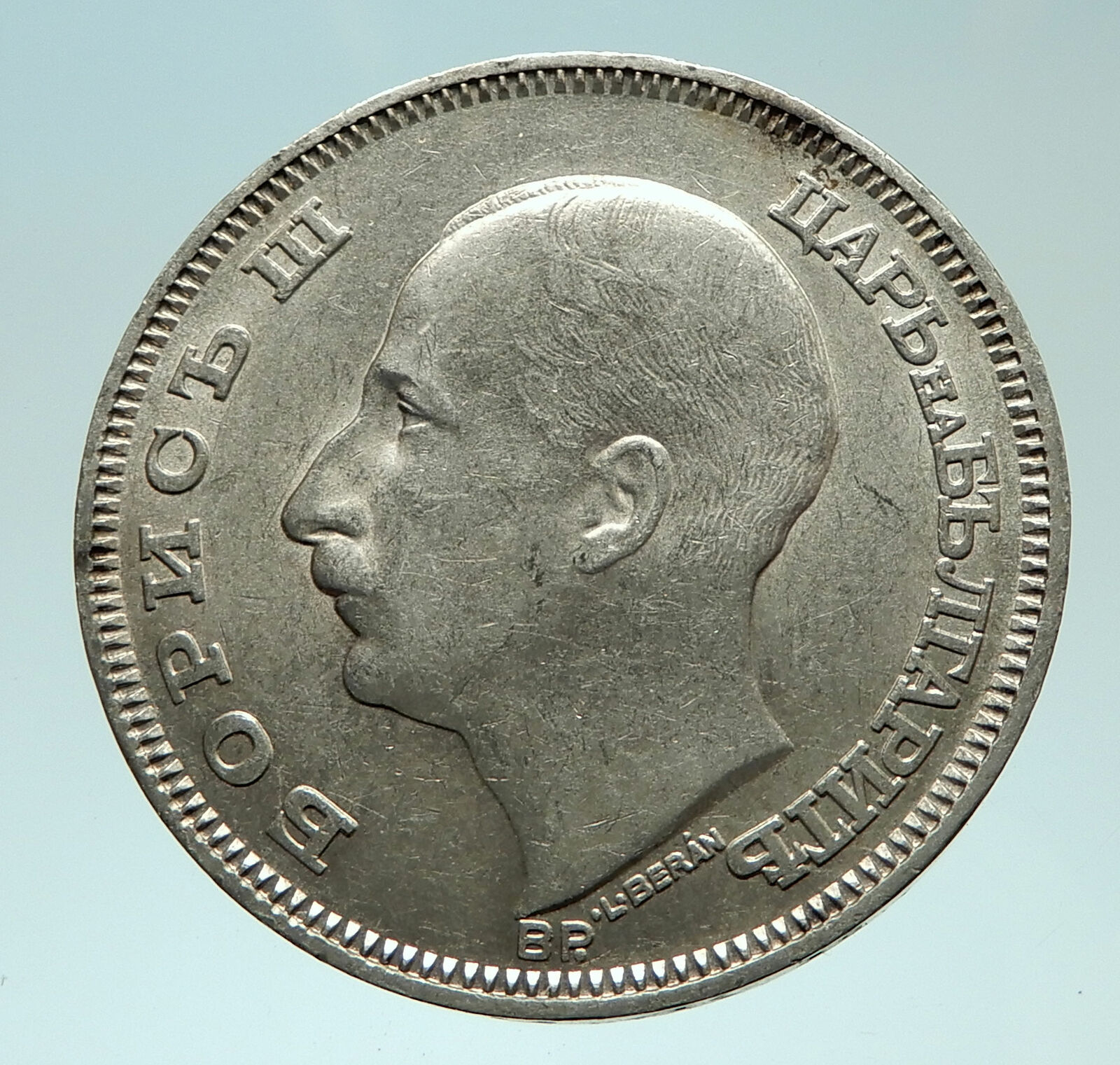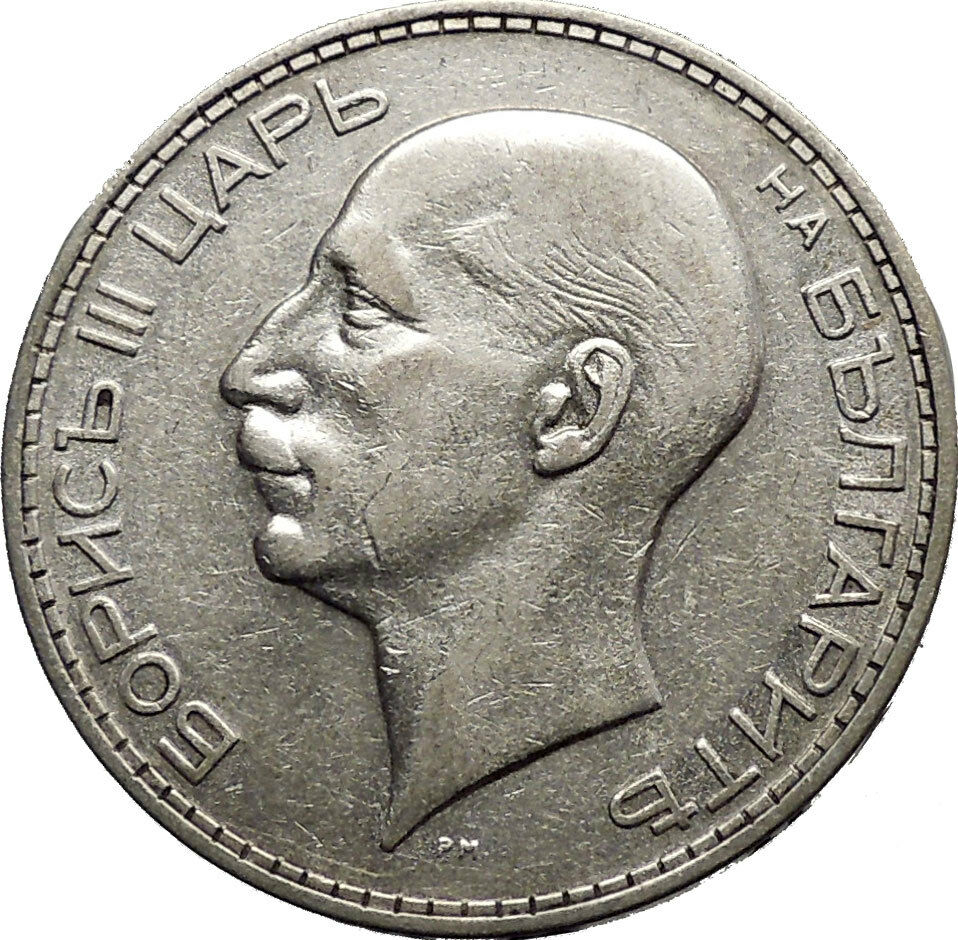|
Bulgaria
100th Anniversary of National Library
1978 Silver 5 Leva 36mm (20.60 grams) 0.500 Silver (0.3295 oz. ASW)
Reference: KM# 101
НАРОДНА РЕПУБЛИКА БЪЛГАРИЯ 681 1944 ПЕТ ЛЕВА 5, Coat of arms of Bulgaria.
HAPOДHA БИБЛИOTEKA 1878-1978 КИРИЛ И МЕТОДИЙ, National Library.
You are bidding on the exact item pictured, provided with a Certificate of Authenticity and Lifetime Guarantee of Authenticity.
 The SS. Cyril and Methodius National Library (Национална библиотека „Свети Свети Кирил и Методий”) is the national library of Bulgaria, situated in the capital city of Sofia. Founded on 4 April 1878, the library received the status of Bulgarian National Library three years later and the Bulgarian National Revival Archive was merged into it in 1924. The SS. Cyril and Methodius National Library (Национална библиотека „Свети Свети Кирил и Методий”) is the national library of Bulgaria, situated in the capital city of Sofia. Founded on 4 April 1878, the library received the status of Bulgarian National Library three years later and the Bulgarian National Revival Archive was merged into it in 1924.
It is named after “SS. Cyril and Methodius”; Saints Cyril and Methodius. They are the creators of the Glagolitic alphabet. The Cyrillic alphabet is named after Cyril.
The present building of the library is among the landmarks of Sofia. It was designed by the famous Bulgarian architectural team Vasilyov-Dimitur Tsolov and completed in the period 1940-1953.
History
The SS. Cyril and Methodius National Library is currently the largest public library in Bulgaria and the oldest cultural institution after the country’s liberation, and also houses one of the richest Ottoman archival collections.
In 1878, Mikhail Bobotinov, a teacher and secretary of the City Council in Sofia, proposed to establish a public library for the need of cultural and educational development in Sofia. The library was then arranged and open in 1878 and finally received its own building in 1900. In 1939, a new building began construction, but sadly in 1944 both the new and old building were destroyed during a bombing in Sofia. In 1953, the National Library opens its new building under the name “Vasil Kolarov”. It was not until 1963 that the library was renamed from “Vasil Kolarov” to “St. Cyril and Methodius”.
Notable collections
- Slavonic Scriptures, a collection of more than 1,700 originals dating from the 11th to the 19th centuries.
- Greek and other Foreign Scriptures with around 200 monuments, 9th to 19th century.
- Eastern Scriptures, containing around 3,100 Arabic, 500 Ottoman, and 150 Persian codicies, dated 11th to the 19th centuries.
- Various archives of Ottoman, Arabic, and Persian documents, catalogued under the Collection of Oriental Archives and the Newer Turkish Archives and 328 separate funds, each sorted by geographical criteria, covering a period from the 15th until the first quarter of the 20th century. Both collections contain over 500,000 units, 714 registers (defters) and 168 sidjals.
- Old Print, Rares and Valuables, a collection of about 30,000 volumes in Old Church Slavonic, Bulgarian and foreign languages, covering a period from the 15th until the 20th century, plus a collection of Bulgarian Renaissance press from the period before 1878.
- Old Print Books from the Orient, a collection of around 2,000 volumes in Arabic, Turkish and Persian, covering a period from 1593 to the first quarter of the 20th century.
- Bulgarian Historical Archive with over 1.5 million documents under 700 separate archives covering the work of Bulgarian revolutionaires, economic, cultural and public people from the 18th until the beginning of the 20th century, as well as the history of the independence struggle in Macedonia and Eastern Thrace (see History of Bulgaria).
- Portraits and Photographs, a collection of over 80,000 photographs and illustrations.

Bulgaria (Bulgarian: България, tr. Bǎlgariya), officially the Republic of Bulgaria (Bulgarian: Република България, tr. Republika Bǎlgariya, IPA: [rɛˈpublikɐ bɐɫˈɡarijɐ]), is a country in southeastern Europe. It is bordered by Romania to the north, Serbia and Macedonia to the west, Greece and Turkey to the south, and the Black Sea to the east. With a territory of 110,994 square kilometres (42,855 sq mi), Bulgaria is Europe’s 16th-largest country.
 Organised prehistoric cultures began developing on current Bulgarian lands during the Neolithic period. Its ancient history saw the presence of the Thracians, Ancient Greeks, Persians, Celts, Romans, Goths, Alans and Huns. The emergence of a unified Bulgarian state dates back to the establishment of the First Bulgarian Empire in 681 AD, which dominated most of the Balkans and functioned as a cultural hub for Slavs during the Middle Ages. With the downfall of the Second Bulgarian Empire in 1396, its territories came under Ottoman rule for nearly five centuries. The Russo-Turkish War of 1877-78 led to the formation of the Third Bulgarian State. The following years saw several conflicts with its neighbours, which prompted Bulgaria to align with Germany in both world wars. In 1946 it became a one-party socialist state as part of the Soviet-led Eastern Bloc. In December 1989 the ruling Communist Party allowed multi-party elections, which subsequently led to Bulgaria’s transition into a democracy and a market-based economy. Organised prehistoric cultures began developing on current Bulgarian lands during the Neolithic period. Its ancient history saw the presence of the Thracians, Ancient Greeks, Persians, Celts, Romans, Goths, Alans and Huns. The emergence of a unified Bulgarian state dates back to the establishment of the First Bulgarian Empire in 681 AD, which dominated most of the Balkans and functioned as a cultural hub for Slavs during the Middle Ages. With the downfall of the Second Bulgarian Empire in 1396, its territories came under Ottoman rule for nearly five centuries. The Russo-Turkish War of 1877-78 led to the formation of the Third Bulgarian State. The following years saw several conflicts with its neighbours, which prompted Bulgaria to align with Germany in both world wars. In 1946 it became a one-party socialist state as part of the Soviet-led Eastern Bloc. In December 1989 the ruling Communist Party allowed multi-party elections, which subsequently led to Bulgaria’s transition into a democracy and a market-based economy.

Bulgaria’s population of 7.2 million people is predominantly urbanised and mainly concentrated in the administrative centres of its 28 provinces. Most commercial and cultural activities are centred on the capital and largest city, Sofia. The strongest sectors of the economy are heavy industry, power engineering, and agriculture, all of which rely on local natural resources.
The country’s current political structure dates to the adoption of a democratic constitution in 1991. Bulgaria is a unitary parliamentary republic with a high degree of political, administrative, and economic centralisation. It is a member of the European Union, NATO, and the Council of Europe; a founding state of the Organization for Security and Co-operation in Europe (OSCE); and has taken a seat at the UN Security Council three times.
|





 The SS. Cyril and Methodius National Library (Национална библиотека „Свети Свети Кирил и Методий”) is the national library of Bulgaria, situated in the capital city of Sofia. Founded on 4 April 1878, the library received the status of Bulgarian National Library three years later and the Bulgarian National Revival Archive was merged into it in 1924.
The SS. Cyril and Methodius National Library (Национална библиотека „Свети Свети Кирил и Методий”) is the national library of Bulgaria, situated in the capital city of Sofia. Founded on 4 April 1878, the library received the status of Bulgarian National Library three years later and the Bulgarian National Revival Archive was merged into it in 1924. 
 Organised prehistoric cultures began developing on current Bulgarian lands during the Neolithic period. Its ancient history saw the presence of the Thracians, Ancient Greeks, Persians, Celts, Romans, Goths, Alans and Huns. The emergence of a unified Bulgarian state dates back to the establishment of the First Bulgarian Empire in 681 AD, which dominated most of the Balkans and functioned as a cultural hub for Slavs during the Middle Ages. With the downfall of the Second Bulgarian Empire in 1396, its territories came under Ottoman rule for nearly five centuries. The Russo-Turkish War of 1877-78 led to the formation of the Third Bulgarian State. The following years saw several conflicts with its neighbours, which prompted Bulgaria to align with Germany in both world wars. In 1946 it became a one-party socialist state as part of the Soviet-led Eastern Bloc. In December 1989 the ruling Communist Party allowed multi-party elections, which subsequently led to Bulgaria’s transition into a democracy and a market-based economy.
Organised prehistoric cultures began developing on current Bulgarian lands during the Neolithic period. Its ancient history saw the presence of the Thracians, Ancient Greeks, Persians, Celts, Romans, Goths, Alans and Huns. The emergence of a unified Bulgarian state dates back to the establishment of the First Bulgarian Empire in 681 AD, which dominated most of the Balkans and functioned as a cultural hub for Slavs during the Middle Ages. With the downfall of the Second Bulgarian Empire in 1396, its territories came under Ottoman rule for nearly five centuries. The Russo-Turkish War of 1877-78 led to the formation of the Third Bulgarian State. The following years saw several conflicts with its neighbours, which prompted Bulgaria to align with Germany in both world wars. In 1946 it became a one-party socialist state as part of the Soviet-led Eastern Bloc. In December 1989 the ruling Communist Party allowed multi-party elections, which subsequently led to Bulgaria’s transition into a democracy and a market-based economy.





